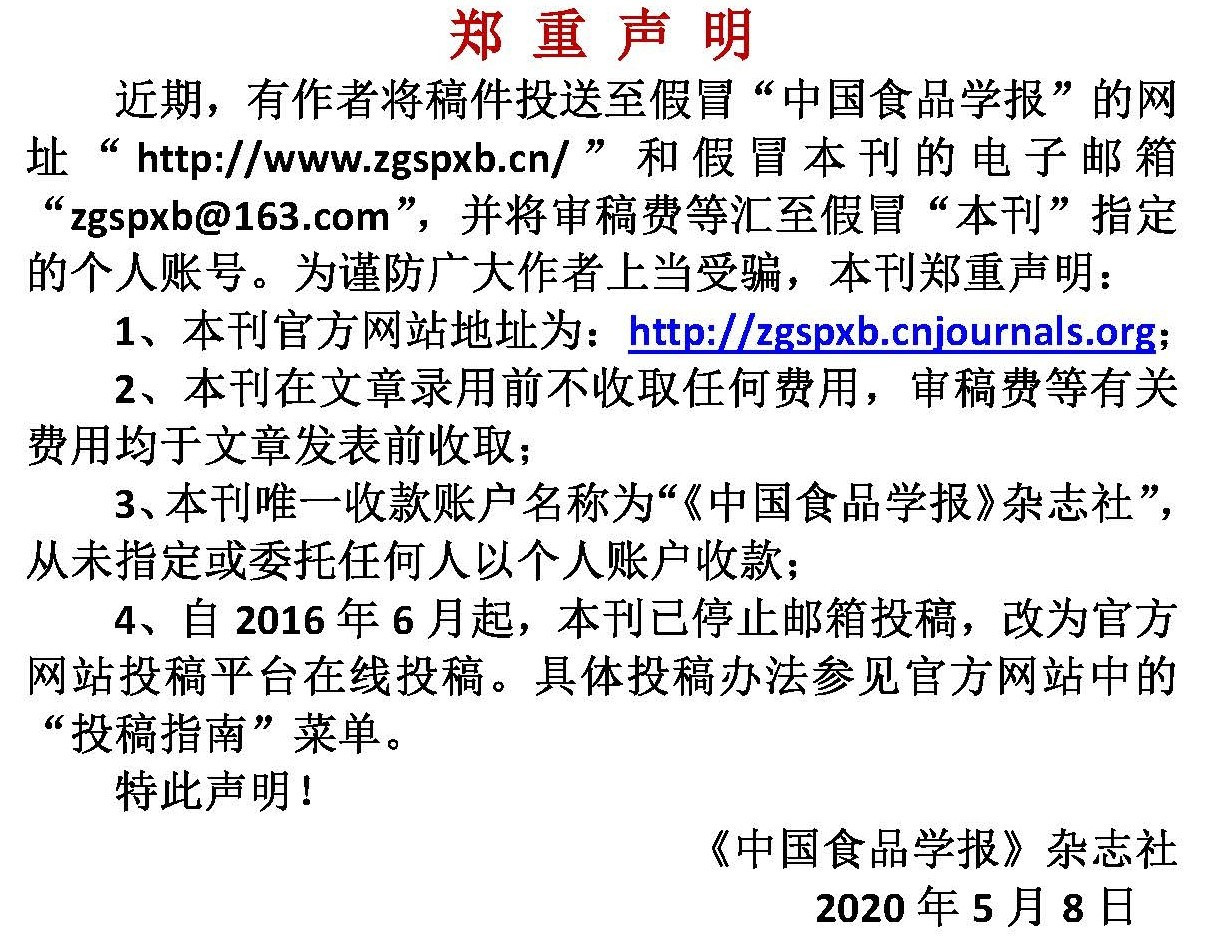(1.福州大学先进制造学院 食品营养与健康研究中心 福建晋江 362200;2.福州大学生物科学与工程学院 食品科学技术研究所 福州 350108;3.上海理工大学健康科学与工程学院 上海食品微生物工程技术研究中心 上海 200093;4.北京食品营养与人类健康高精尖创新中心 北京工商大学 北京 100048)
国家自然科学基金面上项目(32072204)
(1.Food Nutrition and Health Research Center, College of Advanced Manufacturing, Fuzhou University,Jinjiang 362200, Fujian;2.Institute of Food Science and Technology, College of Biological Science and Engineering, Fuzhou University,Fuzhou 350108;3.College of Health Science and Engineering, University of Shanghai for Science and Technology,Shanghai Engineering Research Center for Food Microbiology, Shanghai 200093;4.Beijing Advanced Innovation Center for Food Nutrition and Human Health, Beijing Technology and Business University, Beijing 100048)
引用本文
尤文强,严荧银,杨梓翊,孙金沅,张雯,韩金志,艾连中,孙宝国,倪莉,吕旭聪.红曲菌与酿酒酵母组合发酵对米酒挥发性风味组分生成的影响[J].中国食品学报,2024,24(3):287-297
复制分享
文章指标
- 点击次数:
- 下载次数:
- HTML阅读次数:
历史
- 收稿日期:2023-03-16
- 最后修改日期:
- 录用日期:
- 在线发布日期: 2024-04-16
- 出版日期:
地址 :北京市海淀区阜成路北三街8号9层 邮政编码 :100048
电话 :010-65223596 65265375 电子邮箱 :chinaspxb@vip.163.com
技术支持:北京勤云科技发展有限公司
